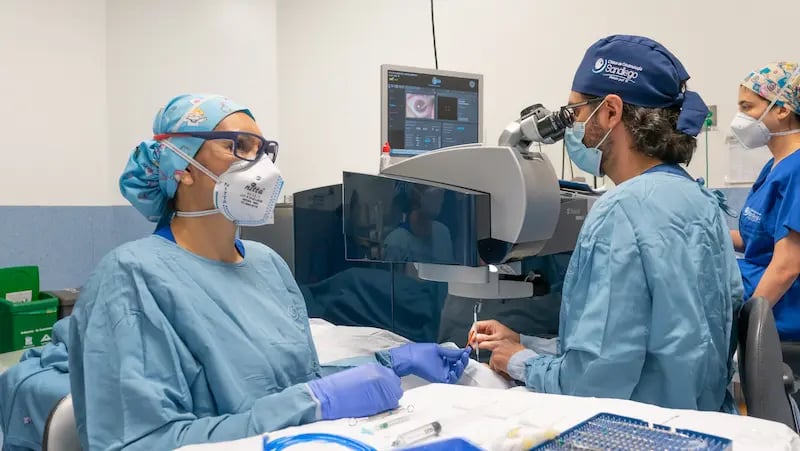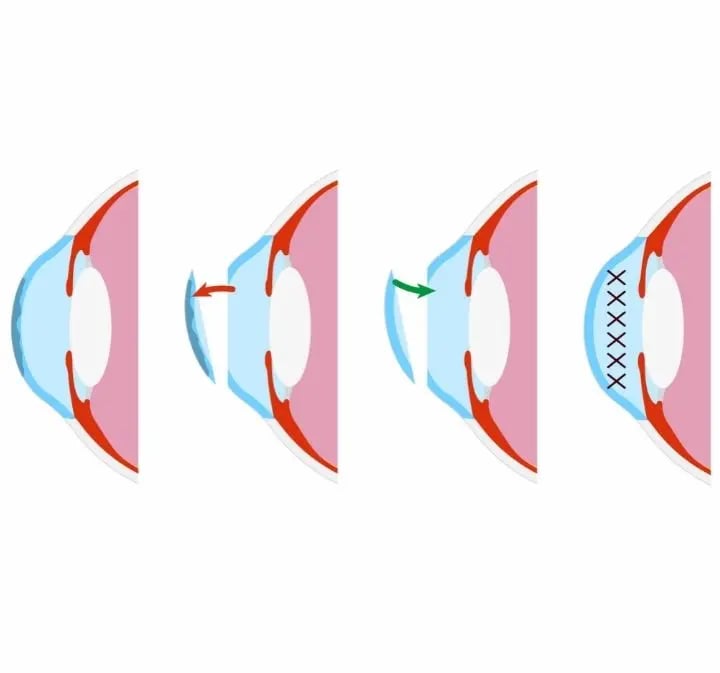Keratoplasty


Keratoplasty
Cornea is the tissue that covers the pupil. If it loses its transparency or has irregularities, it causes grave problems in the formation of images. Cornea transplantation is a surgical procedure through which the abnormal or sick cornea is replaced by a healthy cornea, which is taken from a deceased doner.
Causes: Recurrent infections, such as keratitis, usually caused either by bacteria or virus, may cause ulcers in the cornea, so that the scar tissue that is formed is a bit opaquer than the one of the original healthy cornea. Traumas or burns by chemical substances,
Corneal dystrophies are a set of diseases that cause loss of transparency in the cornea, without going through an inflammatory process. They are disorders that damage both eyes, usually appear in the first decades of life, and advance slowly.
Keratoconus is a kind of progressive corneal degeneration, in which the normal hemispheric structure of the cornea turns into a cone, due to the thinning of the central area. It is usually bilateral, but not symmetric, and it makes sight more and more blurred as it advances.
Aging has the cornea, as any other tissue, grow old and degenerate until it forms either a peripheric arc (gerontoxon or senile arc), which does not affect visual capacity, or a diffused affectation of greyish speckles, which does not usually alter sight, and is known as cornea farinata (floury cornea).
Procedure: This surgery is done under either general or local anesthesia, depending both on the patient’s health conditions, and the surgeon’s preferences. The inability generated varies in every case, but, if there aren’t any complications, the patient may resume their work after 2 or 3 weeks, although, in general, recovering visual sharpness may take weeks or months.
SPECIAL CONDITIONS:
- The risk of corneal rejection will be greater, if the patient has had a previous corneal transplantation, or if the cornea is very vascularized.
- The risk of failure of the graft is a lot higher, if ocular pressure is high.
- The risk of corneal rejection is higher among children.

 Pay your appointment
Pay your appointment

